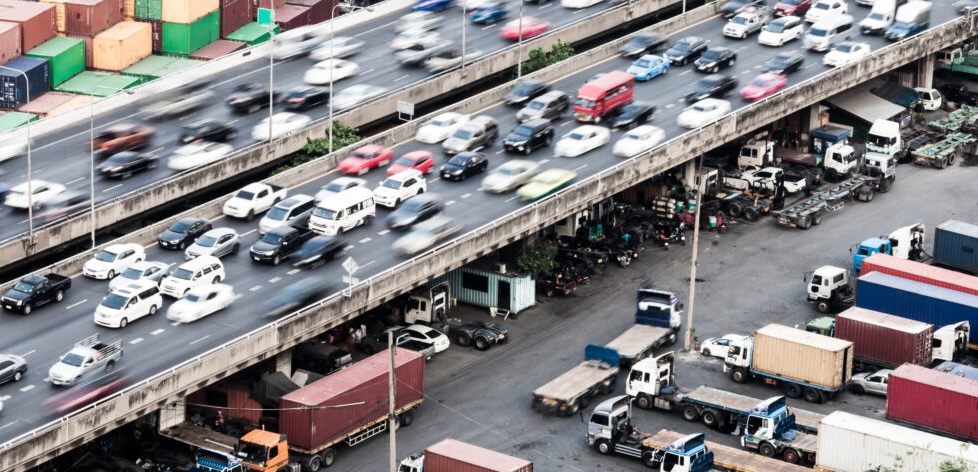SMATS Traffic Solutions
The volume of seaborne trade continues to increase, and more shipments means more trucks to carry the freight inland, ultimately leading to vehicle congestion in and around maritime ports. Long queues for these trucks causes several concerns for both port authorities and port operators, including hardships imposed on truck drivers, disruption of traffic, environmental issues, and even degradation of a port's brand.

Congestion resulting in long truck wait times is a serious problem at ports. According to NEXT Trucking, "Nearly 63% of drivers say they wait three hours or more at shipping docks. According to the April 2019 FREIGHTWAVES Port Report, wait times in Los Angeles ports run around 120 minutes, with the Elizabeth New Jersey port running about 159 minutes."
An article in Repairer Driver News also warns about congestion at many ports with an average time of 86 minutes to get trucks through and 26% of the transactions taking two hours or longer.
This blog will explore 5 major concerns ports face due to truck congestion, and how real-time traffic data and predictive analytics can help solve these dilemmas.
1. Operational Efficiency
Truck congestion substantially diminishes port efficiency, causing a domino effect that reverberates throughout the port operation.
"Congestion is never an ideal case scenario in port logistics," according to a blog on Container Xchange. "High turnaround time can slow down the outward movement of cargo from the port. It can disrupt the entire flow of operation … All this adds up to increased turnaround time and further impacts the efficiency of the port."
Optimizing port operations with real-time data
Real-time data on truck movements — aggregated and collected passively, and analyzed with the right platform — can help accurately predict truck wait times and turn times. This information allows port operators to proactively monitor the efficiency of truck movements within the terminal, and optimize operations by taking actions such as:
■ More effective gate allocation
■ More efficient scheduling of truck appointments and staff resources
■ Fine tuning truck loading and other processes
2. Sustainability
Trucks waiting in long lines at a port, or stuck in traffic near the port, lead to more pollution in the area. For example, the California Air Resources Board explains, "Major seaports in California have been experiencing a substantial increase in cargo imports, resulting in significant congestion at terminals and in surrounding areas. This has led to emissions increases from freight-related sources which can negatively impact air quality especially in communities near ports."
A UCLA report further outlines the California example: "The San Pedro Bay Ports contribute significantly to the suboptimal air quality that residents are exposed to in communities around the port … A major contributor of poor air quality is diesel truck exhaust."
Protecting the environment by reducing emissions
Sustainability has become a port priority in recent years, and reducing truck congestion in the port and on nearby roadways is one of the best ways a port can protect the environment. Access to real-time traffic data enables ports to manage their operations and reduce truck congestion, resulting in lower CO2 emissions.
3. Truck Driver Relations
Long wait times also adversely impact truck drivers. Congestion is not only annoying but actually reduces income for the drivers. A Business Insider article explains, "Only about 20% of drivers at US ports operate as hourly employees. Most truckers are independent contractors and paid per load — meaning no matter how long they wait outside ports or warehouses, they often receive the same pay."
Delivering a positive port experience for truckers
Port operators can deliver real-time data on wait times via a mobile app that truck drivers can use to make smart decisions about their schedules, such as booking appointments at ideal times and avoiding peak traffic periods. This type of mobile app offers truck drivers more control to minimize wait times, when compared with other solutions such as appointment apps or cameras — neither of which provide current and predicted wait times to help drivers plan their schedules.
4. Community Relations
Another concern for port authorities is that long lines of trucks waiting at port terminals often turn into traffic congestion on the local roads, causing problems for the citizens that live and work in the area.
The Port of Los Angeles is just one example. The corridor leading to the port cannot handle the thousands of trucks coming to the port each week. "As a result, heavy-duty trucks often drive by residences and schools to avoid the congestion. Sometimes, truckers will go as far as abandoning containers and chassis in those same streets," says a Bloomberg article.
Maintaining a positive relationship with the local community
Real-time traffic data combined with origin-destination analysis can help port authorities track truck movements and identify routes on nearby streets where trucks are negatively affecting the community. This information can be shared with community stakeholders to address the situation and maintain favorable relationships with the surrounding municipalities.
5. Competitive Edge
"The efficiency of port infrastructure has also been identified as a key contributor to overall port competitiveness," according to a report from the World Bank. With regard to truck congestion, this may be the most important consideration for port operators because it directly impacts customer retention and profitability of the port.
Truck congestion can disrupt a port's operation, increase port service rates, cause trouble for shipping companies and truck drivers, and ultimately diminish a port's competitive advantage.
Keeping up with the competition
Real-time data and analytics provide port authorities and operators with extensive visibility into truck queues and traffic, so they can proactively address the situation and minimize congestion. This same capability also allows ports to share key performance indicators — such as wait times and turn times — with current and potential customers to demonstrate the port's advantage over competing facilities. This essential technology can help improve customer satisfaction, strengthen a port's reputation, and preserve its leadership position in the market.




